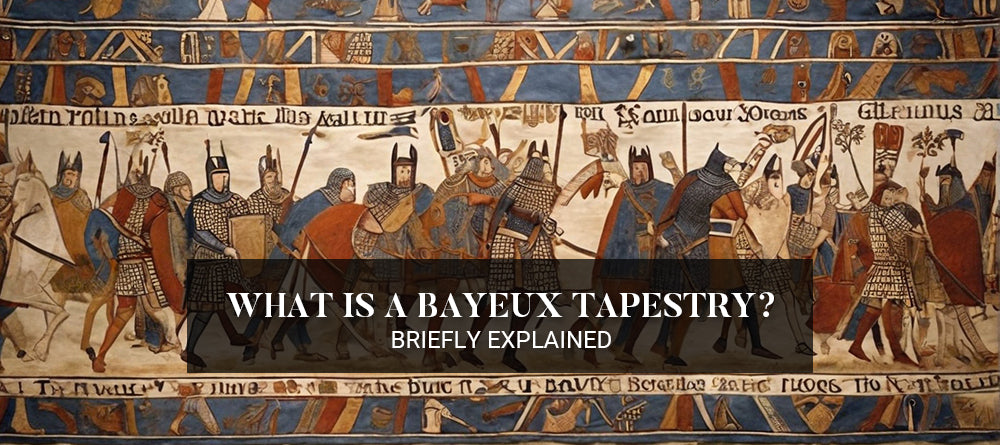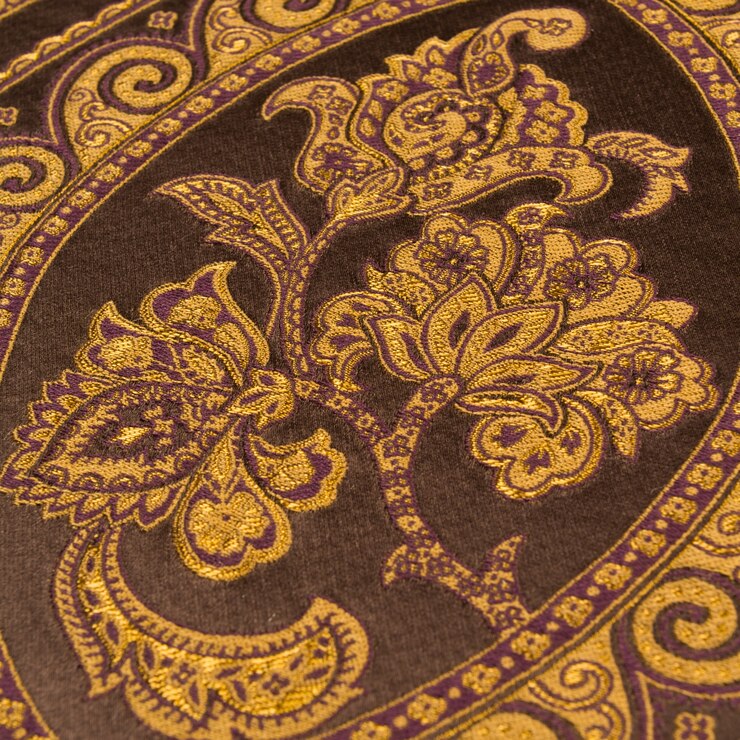
What is a Bayeux Tapestry? History Explained
An epic tale woven into the fabric of history and a rare gem from the medieval era is the Bayeux tapestry. It is one of the few artworks that belong to the medieval period and still survives with a classic elegance.
This tapestry is the greatest example of medieval art that fairly captures the historical events of the Norman Conquest and the effects of Norman rule on England afterward. It is noteworthy as well because it sheds light on the kinds of weapons, attire, fashion, and even military strategies used during the period.
But if you want to delve into the rich world of Bayeux tapestry, you must go into the depth of it. In this blog, we will be exploring the rich history of the Bayeux tapestry and the fascinating story behind this iconic creation.

Role Of The Bayeux Tapestry
The Bayeux tapestry is the most popular artwork from Romanesque art. It has a dimension of 70m in length and 50m in width, and the entire tapestry body is embroidered with woolen threads on a linen base. The intricate detail and deft composition of the tapestry are a testament to the creative and technological achievements of the time.
With a long history dating back thousands of years, textile artwork is a unique and alluring form of artistic expression. One of the most notable works in this domain is the incredible Bayeux Tapestry.
Despite being called a tapestry, this amazing piece is better described as embroidery because of its detailed imagery made of fibers. Using wool yarn, the Bayeux Tapestry painstakingly stitches an image onto a backdrop of pre-woven fabric, in contrast to traditional tapestries made from just a single woven piece.

Material Used To Create Bayeux Tapestry
To create the background canvas of the Bayeux tapestry, the artists used linen with embroidered patterns. The linens were usually produced from the naturally colored threads of wool.
By sewing the narrow strips of linen, the width of the tapestry was achieved and woven. A range of colored wool threads were used to create the embroidered patterns and designs. By tracing the design itself onto the linen, the embroiderers could follow the outline.
When the Bayeux tapestry was created, artisans used natural dyes to color the wooden threads. These colors were usually made from a range of plants and insects.
The remarkable benefit of using natural colors is they are still vibrant and vivid even after thousands of years. This stands as a testament to the skillful craftsmanship and quality of elements used to manufacture the tapestries.
What Does The Tapestry Narrate?
The Bayeux tapestry distinctly portrays the rich artistic culture of the 11th century. The Romanesque era especially focused on the lively and detailed visuals of their artworks. Bayeux tapestry vibrantly portrays the historical incidents that took place during the Norman conquest.
It incorporates Latin texts that skillfully narrate all the scenes. Furthermore, the ornamental borders designed at the top and bottom create a cohesive visual depth and effectively frame all the depictions. Characters like William, Duke of Normandy, and the King of England, Harold, are portrayed in this tapestry.
In the initial stages, it portrayed the visuals of the imagery of King Harold’s journey to France. The last image of the series portrays English soldiers hastily retreating from the Hastings Battlefield.
The last scene on the tapestry, which many believe to be William being crowned, was initially five feet in size, but was lost centuries ago along with the tapestry's actual sections. These five feet are no longer mentioned in historical accounts.
How Was The Tapestry Made?
Historians posit that the Bayeux tapestry was ordered by Bishop Odo, half-brother of William the Conqueror. However, according to oral tales circulating in Bayeux, a different story suggests that Queen Matilda, the wife of William the Conqueror, had ordered this tapestry.
Based on this tale, in France, the tapestry is still known as "La Tapisserie de la Reine Mathilde" ("The Tapestry of Queen Matilda"). The authenticity of both of the original theories still needs to be determined. These questions may remain unanswered and create a sense of mystery.
Who Are The Characters Depicted In The Bayeux Tapestry?
Among a grand total of 626 characters, just three women were portrayed in this detailed tapestry. It portrays the story of how the Norman Conquest continuously minimizes and marginalizes the role of women.
Three women who were seen in this tapestry are Edith of Wessex, Edith Swanneck, and Elfgyva. The first woman, Edith of Wessex, was the queen of Edward the Confessor. Whereas the second woman was possibly King Harold's wife, and the third woman’s identity is still a mystery.
Conclusion
In conclusion, the Bayeux Tapestry is a masterpiece that transcends the boundaries of traditional tapestry art. It stands as a living testament to the events that shaped England in the 11th century, capturing the essence of a significant historical moment.
As we admire the intricate details and vibrant colors woven into its fabric, we gain a deeper appreciation for this remarkable piece's artistry and storytelling power.
The Bayeux Tapestry continues to be a source of fascination and inspiration, connecting us to the past through its timeless threads. Visit Home Decor Tapestries and witness these classic tapestry designs and decorate your home.
Browse Our Other Blogs
- How to Hang a Tapestry Without Nails: 7 Easy Tips
- Unraveling Medieval Tapestries: A Concise History
- How to Decorate Your Room with Wall Hanging Tapestries: 5 Easy Steps
- How To Clean Tapestry Wall Hanging? Maintenance & Preservation Tips for Longevity
- Step-by-Step Guide: Hanging Tapestries on Walls the Right Way
- Why Tapestry Is Often Pricier Than Traditional Art: Top 5 Reasons
